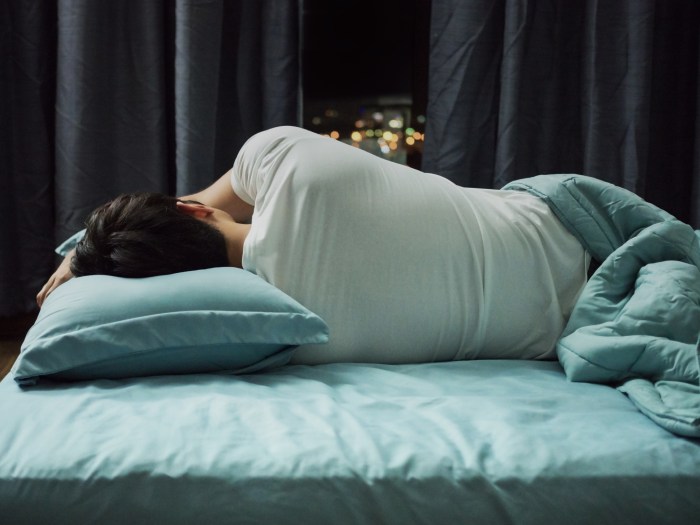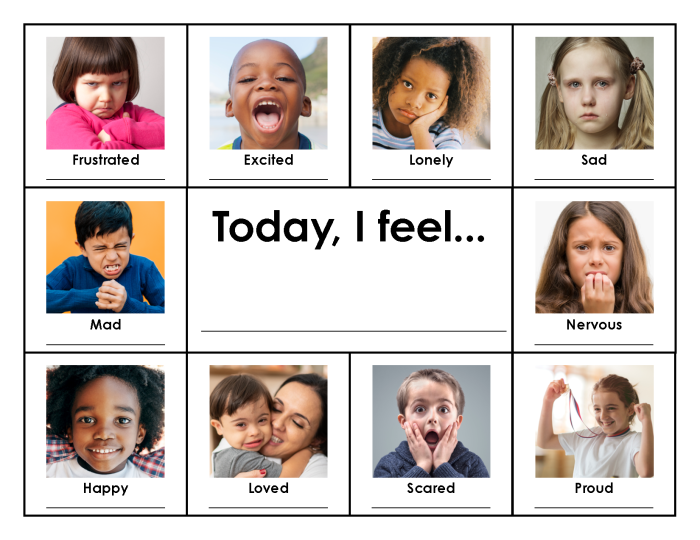Nod off on couch but lie awake on bed mind your sleep cycle. Falling asleep easily on the couch, but struggling to sleep in bed? This isn’t a mystery; it’s often a subtle mismatch between your environment and your body’s internal clock. Understanding your sleep cycle is key to mastering this common sleep struggle. We’ll explore the science behind sleep, the role of your environment, and practical strategies for better sleep consistency.
From understanding the intricate stages of sleep to optimizing your bedroom environment, we’ll delve into the various factors that can disrupt your sleep cycle. This isn’t just about feeling rested; it’s about maximizing your cognitive function, physical health, and overall well-being.
Understanding the Sleep Cycle Disruption
The human sleep cycle is a complex interplay of physiological processes that profoundly impacts our daily lives. Disruptions to this cycle can lead to a cascade of negative consequences, affecting mood, cognitive function, and overall health. Understanding the intricacies of the sleep cycle, including its stages, influences, and variations across age groups, is crucial for addressing sleep-related issues and promoting optimal well-being.The sleep cycle is a repeating pattern of distinct stages, each serving a vital role in restoring our bodies and minds.
This cyclical process is governed by an internal biological clock, the circadian rhythm, which dictates when we feel sleepy and awake.
The Stages of Sleep
Sleep is not a uniform state but rather a progression through different stages, each with unique characteristics and functions. These stages are crucial for both physical and cognitive restoration. Stage 1, the initial transition from wakefulness to sleep, is characterized by slow eye movements and reduced muscle activity. Stage 2 marks a deeper level of sleep, with further decreases in heart rate and brain activity.
Stages 3 and 4, known as slow-wave sleep, are characterized by the presence of delta waves, the slowest brain waves, and are vital for physical restoration and growth hormone release. Finally, Rapid Eye Movement (REM) sleep, characterized by rapid eye movements, dreaming, and increased brain activity, is essential for memory consolidation and emotional processing. The cycle typically repeats these stages every 90-110 minutes throughout the night.
Factors Affecting the Sleep Cycle
Numerous internal and external factors can significantly impact the sleep cycle, often leading to sleep disturbances. Stress, a common modern-day challenge, can interfere with the natural sleep-wake cycle by activating the body’s stress response system. Caffeine intake, often consumed for its stimulating effects, can also disrupt sleep patterns by delaying the onset of sleep and reducing sleep duration and quality.
Lifestyle choices, including irregular sleep schedules, exposure to artificial light at night, and inadequate sleep hygiene practices, can further contribute to sleep cycle disruption.
Sleep-Wake Cycle Across Age Groups
The sleep-wake cycle varies significantly across different age groups, reflecting developmental changes and individual needs. Infants and young children require significantly more sleep than adults, with their sleep cycles often characterized by multiple short periods of sleep throughout the day. As we age, sleep patterns typically shift, with adults needing around 7-9 hours of sleep per night. The elderly may experience more frequent awakenings and shorter sleep durations.
These age-related differences highlight the importance of tailoring sleep recommendations to individual developmental stages.
Physiological Processes of Transition to Sleep
The transition from wakefulness to sleep involves a complex interplay of physiological processes. The circadian rhythm plays a central role, influencing the release of hormones like melatonin, which promotes sleepiness. Changes in brain wave activity, from high-frequency beta waves associated with wakefulness to lower-frequency theta and delta waves in sleep, are indicative of the shift in brain state.
Furthermore, the autonomic nervous system plays a critical role in regulating heart rate, breathing, and body temperature, facilitating the transition into sleep.
Influencing Factors on Sleep Quality
Numerous factors, both internal and external, can affect the quality of sleep. Internal factors include underlying medical conditions, such as sleep apnea, and hormonal imbalances. External factors include environmental conditions, such as noise and light pollution, and social factors, like work schedules and family responsibilities. Understanding these various influences is crucial for developing personalized strategies to improve sleep quality and overall well-being.
Ever nod off on the couch, only to lie awake in bed, wrestling with your sleep cycle? It’s a common struggle, especially with a hectic schedule. Luckily, some helpful productivity apps can help you manage your time better, like the ones featured in this list of 10 Awesome Productivity Apps for Hectic Lives. By prioritizing tasks and streamlining your day, you can potentially reclaim those precious hours for better sleep, leading to a more well-rested you.
So, if you’re looking to get a better grip on your sleep cycle, these apps might be just what you need.
Maintaining a consistent sleep schedule, creating a relaxing bedtime routine, and ensuring a conducive sleep environment are essential steps in optimizing sleep quality.
The Couch-to-Bed Sleep Disruption Phenomenon
Falling asleep on the couch feels wonderfully relaxing, but then lying awake in bed can feel frustrating. This seemingly simple transition often reflects a complex interplay between environment and our internal biological clock. Our bodies and minds respond differently to the cues of the couch and the bedroom, creating a hurdle to peaceful slumber.The difference in environment between a cozy couch and a potentially sterile bedroom can significantly impact our ability to transition into a restful sleep state.
The couch often presents a more inviting and comfortable setting for relaxation, potentially leading to a quick fall asleep. However, the bedroom, where sleep is ideally intended, may lack the same immediate appeal, making it harder to drift off once you’ve transferred your sleep-seeking body to this environment.
Environmental Factors in Sleep Disruption
Our environment plays a pivotal role in our sleep-wake cycles. Temperature, light, and sound all contribute to the overall comfort and stimulation levels of a space. The couch often provides a comforting warmth and a soothing atmosphere that facilitates a quicker transition to sleep, but this might be disrupted by the different ambient conditions of the bedroom.
Temperature Variations
Temperature plays a significant role in sleep quality. A slightly cooler room temperature is often conducive to sleep. The couch might be more adequately heated, or the room temperature could be more suitable for relaxation on the couch, compared to the bedroom. However, the room temperature might be too warm for optimal sleep.
Light Differences
Light exposure is crucial in regulating the circadian rhythm. A dimly lit or even dark couch environment can induce relaxation and promote sleep onset. Conversely, the bedroom’s light levels might not be conducive to sleep if there is any source of light, like a streetlight or an electronic device.
Sound Differences
Sound levels also influence sleep. A quiet or calming atmosphere, potentially found on a couch in a quiet living room, can promote relaxation. However, bedroom sounds, like traffic noise or noises from other rooms, can interrupt sleep, and may not be as easily filtered out as compared to a couch in a quieter environment.
Comfort Levels and Stimulation
The couch’s comfort level might be geared towards relaxation and temporary rest. The bed, however, is ideally intended for more sustained sleep. The bed’s design and material might encourage a different kind of relaxation than a couch, leading to different responses.
Comparison of Environments
| Factor | Couch | Bed |
|---|---|---|
| Temperature | Potentially warmer, suitable for relaxation | Cooler, ideal for sleep |
| Light | Dimmer, conducive to relaxation | Variable, potential for light interference |
| Sound | Quieter, less distracting | Variable, potential for noise interference |
| Comfort Level | More focused on immediate comfort and relaxation | More focused on sustained comfort and sleep |
Mental and Physical Factors in Sleeplessness: Nod Off On Couch But Lie Awake On Bed Mind Your Sleep Cycle
Our journey into understanding sleep disruption continues, now delving into the complex interplay of mental and physical factors that can derail our nightly rest. From the subtle effects of stress to the more pronounced impacts of underlying medical conditions, these factors often work in concert to create a vicious cycle of sleep deprivation. Understanding these influences is crucial for developing effective strategies to improve sleep quality.Sleeplessness isn’t always a simple issue; often, it’s a symptom of a deeper problem.
Physical discomfort, anxiety, or even certain medications can disrupt our sleep cycle, making it challenging to fall asleep and stay asleep. Mental health conditions, too, frequently contribute to sleep disturbances. This section will examine these connections, providing insights into the various elements that contribute to a lack of restful sleep.
Common Mental Health Conditions Affecting Sleep
Mental health conditions are frequently associated with sleep disturbances. Conditions like depression, anxiety disorders, and post-traumatic stress disorder (PTSD) can significantly impact sleep quality. These conditions often manifest as difficulty falling asleep, staying asleep, or experiencing poor sleep quality, leading to daytime fatigue and impacting overall well-being. For example, individuals experiencing anxiety may lie awake, ruminating on worries and concerns, which prevents them from entering a deep sleep.
Relationship Between Physical Discomfort and Sleep Disruption
Physical discomfort can significantly disrupt sleep. Aches, pains, and other physical ailments can make it difficult to find a comfortable sleeping position and maintain sleep throughout the night. Conditions such as arthritis, fibromyalgia, or chronic pain syndromes can lead to persistent discomfort, making it challenging to relax and fall asleep. For instance, back pain can prevent individuals from finding a comfortable position, leading to a restless night.
Napping on the couch feels so blissful, but then you’re tossing and turning in bed, right? It’s all about your sleep cycle, and sometimes, we tell ourselves stories about how easy it’ll be to adjust to change. Just like the article on 10 Lies to Stop Telling Yourself About Life Changes points out, sometimes we need to face the truth about those changes.
We need to accept that sometimes our sleep cycle just needs a little tweaking. Maybe it’s time to re-evaluate those bedtime routines, you know?
Similarly, allergies, acid reflux, or other physical ailments can cause discomfort, disrupting sleep.
Anxiety and Stress in Sleeplessness
Anxiety and stress are potent disruptors of sleep. These emotional states can trigger the release of stress hormones like cortisol, which keep the body alert and prevent relaxation. Chronic stress, in particular, can lead to insomnia, characterized by difficulty initiating or maintaining sleep. The constant worrying and racing thoughts associated with anxiety can create a cycle of disrupted sleep, perpetuating the problem.
Effects of Medications and Substances on Sleep Patterns
Certain medications and substances can interfere with normal sleep patterns. Stimulants like caffeine and nicotine can interfere with sleep onset and maintenance. Some medications, such as those for high blood pressure or asthma, can also disrupt sleep. Furthermore, the effects of alcohol, though it might initially induce sleepiness, can lead to fragmented sleep later in the night.
Physical Conditions Causing Sleep Disturbances
Numerous physical conditions can disrupt sleep. These conditions range from respiratory problems, like sleep apnea, to gastrointestinal issues, such as acid reflux. Hormonal imbalances, such as those associated with menopause, can also contribute to sleep disturbances. Furthermore, neurological conditions such as Parkinson’s disease and multiple sclerosis can significantly affect sleep quality. For instance, sleep apnea causes repeated pauses in breathing, resulting in fragmented sleep.
Contrasting Mental and Physical Factors Affecting Sleep
| Factor | Description | Potential Remedies |
|---|---|---|
| Anxiety/Stress | Excessive worry, racing thoughts, and heightened physiological arousal. | Cognitive behavioral therapy (CBT), relaxation techniques, mindfulness practices, and stress-reducing lifestyle changes. |
| Depression | Persistent sadness, loss of interest, and changes in sleep patterns. | Therapy (e.g., CBT, interpersonal therapy), medication (e.g., antidepressants), and lifestyle modifications. |
| Physical Pain/Discomfort | Aches, pains, and discomfort that interfere with sleep. | Pain management strategies (e.g., medication, physical therapy), sleep aids (if prescribed by a doctor), and comfortable sleep environment. |
| Medications/Substances | Certain medications and substances that disrupt sleep patterns. | Adjusting medication dosages, consulting with a doctor, and avoiding substances that interfere with sleep. |
| Sleep Apnea | Repeated pauses in breathing during sleep. | CPAP therapy, lifestyle modifications, and consulting a sleep specialist. |
| Menopause | Hormonal changes associated with sleep disturbances. | Hormone replacement therapy (HRT) (if appropriate), lifestyle modifications, and relaxation techniques. |
Strategies to Improve Sleep Consistency
Recovering a healthy sleep cycle is a journey, not a sprint. It requires patience, consistency, and a willingness to adjust your habits. Understanding your sleep patterns and identifying potential disruptions is the first step. Now, let’s explore practical strategies to cultivate a more reliable sleep routine.Adopting new sleep habits is not about drastic change, but rather thoughtful adjustments.
By incorporating these strategies into your daily life, you’ll be able to gradually improve your sleep quality and overall well-being.
Sleep Hygiene Practices
Consistent sleep hygiene practices are fundamental to regulating your sleep-wake cycle. These routines create a predictable environment that signals to your body it’s time to rest. Maintaining a regular sleep schedule, even on weekends, helps synchronize your internal clock with the external world. Creating a relaxing bedtime routine can also signal your body to wind down and prepare for sleep.
Relaxation Techniques
Stress and anxiety are significant contributors to sleeplessness. Employing relaxation techniques can help ease those tensions and promote calmness before bedtime. Deep breathing exercises, progressive muscle relaxation, and mindfulness meditation can calm the mind and body, preparing you for a restful night’s sleep. Guided imagery, where you visualize peaceful scenes, can also be a powerful tool.
Strategies to Improve Sleep Quality
A holistic approach to improving sleep quality involves addressing various factors. Consistency in sleep schedules, dietary adjustments, and stress reduction techniques are crucial.
- Consistent Sleep Schedules: Establish a regular sleep and wake-up time, even on weekends, to regulate your body’s natural sleep-wake cycle. This helps in creating a predictable rhythm that prepares your body for sleep. A consistent sleep schedule is vital for optimal sleep quality.
- Dietary Adjustments: Avoid large meals or caffeine and alcohol close to bedtime. A light snack, such as a small bowl of oatmeal, can sometimes help with sleep, but avoid anything overly rich or sugary. Certain foods, like those rich in tryptophan (e.g., turkey, bananas), can promote relaxation and sleepiness. Also, ensure you’re staying hydrated throughout the day.
- Stress Reduction Techniques: Incorporate stress-reducing activities into your daily routine. Engage in regular exercise, practice mindfulness or meditation, and find healthy ways to manage stress. Techniques like yoga and tai chi can help alleviate stress and promote relaxation.
Sleep Aids and Their Effects
Sleep aids can be a temporary solution for managing sleep issues, but they’re not a long-term fix. Over-the-counter sleep aids, such as melatonin, can sometimes promote sleepiness, but their effectiveness varies. Prescription sleep aids may be more potent but can carry potential side effects. Consult with a healthcare professional before using any sleep aids.
Optimizing the Bedroom Environment
A comfortable and conducive bedroom environment is essential for a good night’s sleep. Ensure your bedroom is dark, quiet, and cool. A comfortable mattress and pillows are also important. Consider using blackout curtains, earplugs, or a white noise machine to create an optimal sleep environment.
Establishing a Consistent Sleep-Wake Schedule
Creating a consistent sleep-wake schedule is crucial for regulating your body’s natural sleep-wake cycle. Maintaining a consistent sleep schedule, even on weekends, helps synchronize your internal clock with the external world. This creates a predictable rhythm that prepares your body for sleep and wakefulness.
Sleep Environment Optimization

Creating a sleep-conducive environment is crucial for a good night’s rest. Our bedrooms are more than just places to sleep; they are sanctuaries for our bodies and minds to unwind and prepare for the day ahead. Optimizing this space can significantly impact our sleep quality and overall well-being. By meticulously crafting a serene and supportive environment, we can better regulate our sleep cycles and achieve the restorative slumber we crave.The bedroom environment plays a pivotal role in the quality of our sleep.
Ugh, nodding off on the couch is so tempting, but then you’re tossing and turning in bed, minding your sleep cycle. Sometimes, though, connecting with a complete stranger can actually help you wind down. Have you considered trying to talk to more people? It might sound crazy, but checking out this article on 10 Reasons You Should Talk to Strangers might just provide the unexpected solution to your sleep woes.
Maybe a chat with a friendly face could help you finally drift off to sleep and not lie awake all night. Regardless, I’m going to try to stick to my sleep schedule tonight.
A conducive atmosphere promotes relaxation, signals to our bodies that it’s time to sleep, and minimizes distractions that might interrupt our natural sleep-wake cycle. Elements such as lighting, temperature, noise levels, and even the comfort of bedding all contribute to the overall sleep experience.
Importance of a Dark, Quiet, and Cool Environment
A dark, quiet, and cool bedroom environment is essential for promoting sleep. Darkness triggers the release of melatonin, a hormone crucial for regulating sleep-wake cycles. Light exposure, especially blue light emitted from electronic devices, can suppress melatonin production, making it harder to fall asleep. Similarly, excessive noise can disrupt sleep, making it challenging to transition into deep, restorative sleep stages.
A cool room temperature is also vital. Our body temperature naturally drops during sleep, and a cool environment supports this process, contributing to a more comfortable and conducive sleep environment.
Impact of Comfortable Bedding and Pillows
Comfortable bedding and pillows are crucial for a restful night’s sleep. A high-quality mattress that supports the body’s natural curves and provides proper spinal alignment is paramount. Similarly, a supportive and comfortable pillow that conforms to the shape of your head and neck is essential for minimizing neck pain and discomfort. These elements directly impact sleep quality, as discomfort can easily disrupt sleep cycles and lead to restless nights.
Choosing the right bedding and pillows that suit your individual needs and preferences is crucial for maximizing sleep comfort.
Recommendations for Adjusting the Bedroom Environment
To optimize your bedroom for sleep, consider the following recommendations:
- Dim the lights: Reduce light exposure in the hours leading up to bedtime. Use soft, warm lighting or blackout curtains to minimize light interference.
- Minimize noise: Use earplugs, white noise machines, or sound-absorbing curtains to block out disruptive noises. This will create a quieter environment that promotes relaxation and sleep.
- Maintain a cool temperature: Aim for a room temperature between 60 and 67 degrees Fahrenheit (15.5 and 19 degrees Celsius). This range is ideal for maintaining a comfortable body temperature during sleep.
- Invest in comfortable bedding: Select a mattress and pillows that provide adequate support and comfort for your body type and sleeping position. Consider materials like natural latex or memory foam for their supportive properties.
Influence of Room Temperature and Humidity on Sleep
Room temperature and humidity significantly impact sleep quality. A cool room temperature promotes a decrease in body temperature, which is crucial for initiating sleep. Conversely, a hot room or high humidity can make it difficult to fall asleep and stay asleep, leading to discomfort and disrupted sleep cycles. Optimal humidity levels should ideally be between 30% and 50% to prevent excessive dryness or moisture, which can exacerbate discomfort.
Maintaining a stable and appropriate environment can contribute significantly to a restful night.
Comparison of Sleep Environment Setups
| Sleep Environment Setup | Description | Effect on Sleep Quality |
|---|---|---|
| Traditional Setup | Standard bedroom with standard bedding, minimal light control. | May experience disruptions from light and noise, potentially impacting sleep quality. |
| Optimized Setup | Darkened room with blackout curtains, white noise machine, comfortable bedding, cool temperature (60-67°F). | Promotes relaxation, minimizes distractions, supports natural sleep-wake cycles, resulting in higher sleep quality. |
| Technology-Enhanced Setup | Smart home technology with automated lighting and temperature control, noise-canceling headphones. | Offers precise control over environmental factors, potentially leading to highly customized and efficient sleep environments. |
Behavioral Techniques for Sleep Improvement
Getting a good night’s sleep is crucial for overall well-being, and behavioral techniques play a significant role in achieving this. These methods focus on modifying habits and thought patterns that can interfere with sleep. By addressing underlying issues and establishing healthy routines, these strategies can dramatically improve sleep consistency and quality.Cognitive behavioral therapy for insomnia (CBT-I) is a highly effective approach for treating chronic insomnia.
It helps individuals identify and change negative thought patterns and behaviors that contribute to sleep problems. This approach is based on the understanding that thoughts and behaviors influence sleep, and by changing these elements, we can improve sleep quality.
Cognitive Behavioral Therapy for Insomnia (CBT-I) Techniques
CBT-I utilizes various techniques to address insomnia. These techniques include sleep restriction therapy, stimulus control therapy, and cognitive restructuring. Sleep restriction therapy involves adjusting sleep schedule to promote optimal sleep efficiency. Stimulus control therapy aims to associate the bed with sleep only, while cognitive restructuring helps identify and modify negative thoughts about sleep. These techniques are often combined to address the multifaceted nature of insomnia.
Relaxation Exercises for Sleep Promotion
Relaxation techniques can significantly reduce anxiety and promote a state of calmness conducive to sleep. Progressive muscle relaxation, for instance, involves tensing and releasing different muscle groups, promoting physical relaxation. Deep breathing exercises, like box breathing, focus on controlled inhalation and exhalation, slowing down the heart rate and reducing stress. These techniques are often beneficial for individuals struggling with stress or anxiety related sleeplessness.
Managing Stress and Anxiety Before Bedtime
Managing stress and anxiety is essential for improving sleep. Creating a calming bedtime routine can help signal to the body that it’s time to wind down. Activities such as reading a book, listening to calming music, or taking a warm bath can promote relaxation. Avoiding stimulating activities, such as using electronic devices, before bed, can also be helpful.
The goal is to create a consistent and peaceful environment to prepare for sleep.
Mindfulness and Meditation Techniques for Sleep
Mindfulness and meditation practices can help calm the mind and reduce racing thoughts that often interfere with sleep. Mindfulness involves focusing on the present moment without judgment, reducing the tendency to dwell on worries or anxieties. Meditation techniques, such as guided meditations, can help to quiet the mind and promote relaxation. Regular mindfulness and meditation practice can lead to improved sleep quality by reducing stress and promoting a sense of calm.
Table of Behavioral Techniques and Effectiveness
| Technique | Description | Effectiveness |
|---|---|---|
| Sleep Restriction Therapy | Adjusting sleep schedule to improve sleep efficiency | High |
| Stimulus Control Therapy | Associating bed with sleep only | High |
| Cognitive Restructuring | Identifying and modifying negative thoughts about sleep | High |
| Progressive Muscle Relaxation | Tensing and releasing different muscle groups | Moderate to High |
| Deep Breathing Exercises | Controlled inhalation and exhalation | Moderate to High |
| Mindfulness Meditation | Focusing on the present moment | Moderate to High |
Addressing Specific Sleep Problems
Nighttime sleep disturbances can stem from a variety of factors, ranging from simple lifestyle choices to underlying medical conditions. Understanding these potential causes is crucial for effectively addressing the issue and achieving restful sleep. This section will delve into common sleep disruptions, associated disorders, and the importance of professional guidance.Sleep problems often persist despite attempts at lifestyle adjustments.
Identifying the root cause, whether it’s a specific disorder or a combination of factors, is paramount to effective treatment. A personalized approach, tailored to individual needs, is essential for achieving lasting improvements in sleep quality.
Potential Causes of Nighttime Sleep Disturbances
Various factors can disrupt sleep during the night. Stress, anxiety, and even certain medications can interfere with the natural sleep cycle. Diet, especially late-night meals, can trigger indigestion and discomfort. Environmental factors, such as noise or light, can also contribute to sleep problems. Underlying medical conditions, including sleep apnea, restless legs syndrome, and chronic pain, can significantly impact sleep quality.
Examples of Common Sleep Disorders, Nod off on couch but lie awake on bed mind your sleep cycle
Several sleep disorders can manifest as nighttime disturbances. Sleep apnea, characterized by pauses in breathing during sleep, can cause fragmented sleep and daytime fatigue. Restless legs syndrome (RLS) is marked by unpleasant sensations in the legs, leading to an irresistible urge to move them, disrupting sleep continuity. Insomnia, a prevalent disorder, is defined by difficulty falling asleep, staying asleep, or experiencing restful sleep.
Other potential sleep disorders include narcolepsy, characterized by excessive daytime sleepiness, and circadian rhythm disorders, which affect the body’s natural sleep-wake cycle.
Significance of Seeking Professional Help
Ignoring persistent sleep problems can have detrimental effects on both physical and mental well-being. Untreated sleep disorders can lead to a cascade of issues, including daytime fatigue, decreased productivity, mood disturbances, and an increased risk of accidents. A qualified healthcare professional can accurately diagnose the underlying cause and develop a tailored treatment plan.
Role of Sleep Specialists in Diagnosing and Treating Sleep Disorders
Sleep specialists possess specialized knowledge and experience in identifying and managing sleep disorders. They utilize comprehensive evaluations, including sleep studies (polysomnography), to diagnose the nature and severity of the problem. Based on the assessment, they can recommend appropriate therapies, such as behavioral interventions, medications, or lifestyle adjustments. A personalized approach, considering individual factors and preferences, is crucial for successful treatment.
Resources for Finding Professional Sleep Support
Accessing professional sleep support is often possible through various channels. Consulting a primary care physician is a first step, as they can refer patients to specialists or provide initial guidance. Sleep clinics and hospitals offer comprehensive sleep disorder evaluations and treatments. Online resources, such as the National Sleep Foundation website, provide valuable information and can connect individuals with local sleep specialists.
Mental health professionals can also play a crucial role in addressing psychological factors contributing to sleep problems.
Summary

In conclusion, mastering your sleep cycle involves understanding the interplay between your internal and external environment. By recognizing the factors that disrupt your sleep, you can actively work towards creating a sleep-friendly routine. By focusing on your sleep environment, behavioral techniques, and potential underlying issues, you can reclaim control over your sleep and wake up feeling refreshed. Remember, consistency is key! Implementing these strategies will help you nod off on the couch and sleep soundly in bed.











